February was filled with inspiration and wonderful events throughout, including a book launch that we held in our Pimlico showroom: Ateliers of Europe’ - An Atlas of Decorative Arts Workshops’ by John Whelan and Oskar Proctor.
Taking Inspiration From The Ancient Egyptians
6 March 2023
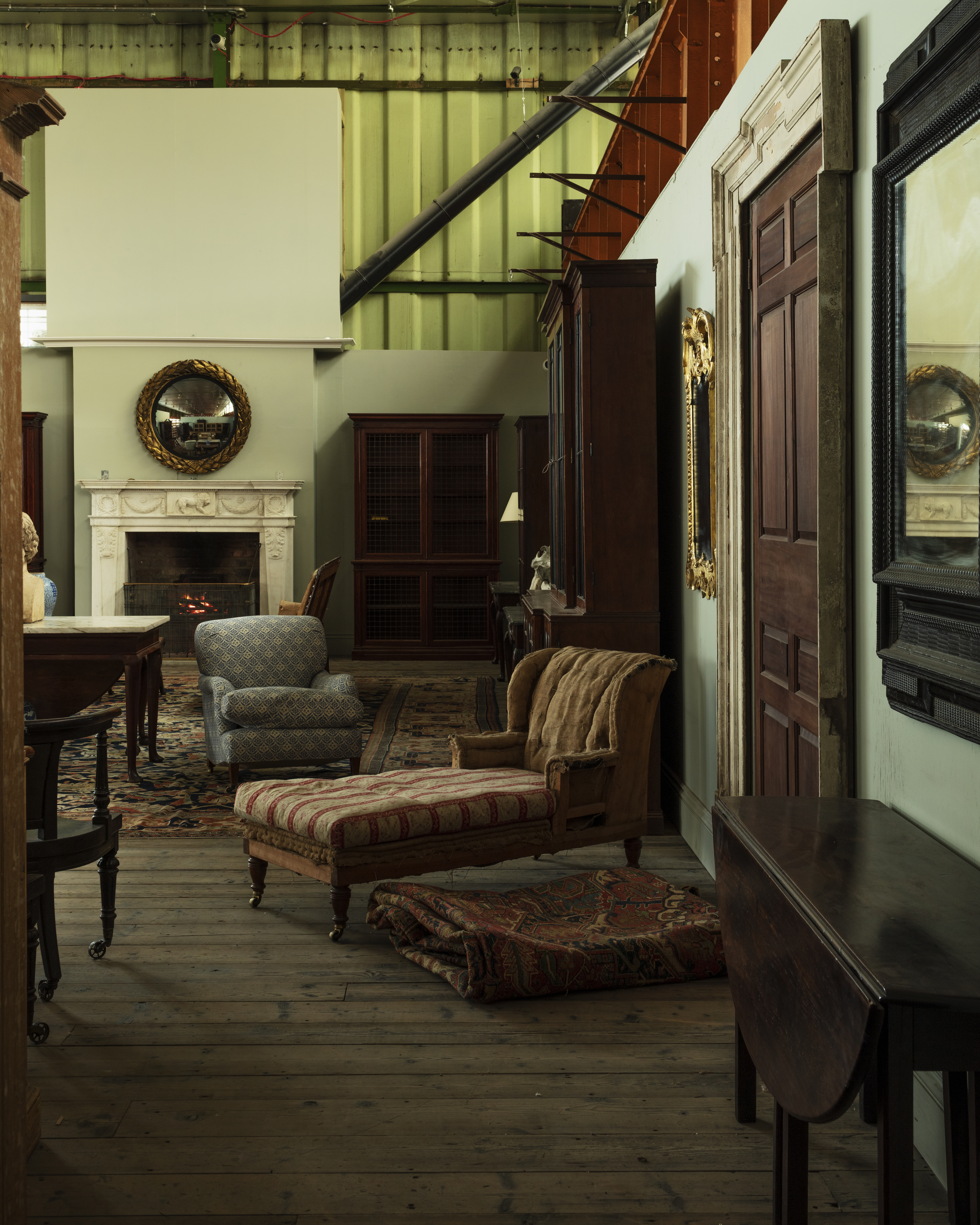
Our Warehouse as seen in Ateliers of Europe’ - An Atlas of Decorative Arts Workshops’ by John Whelan and Oskar Proctor.
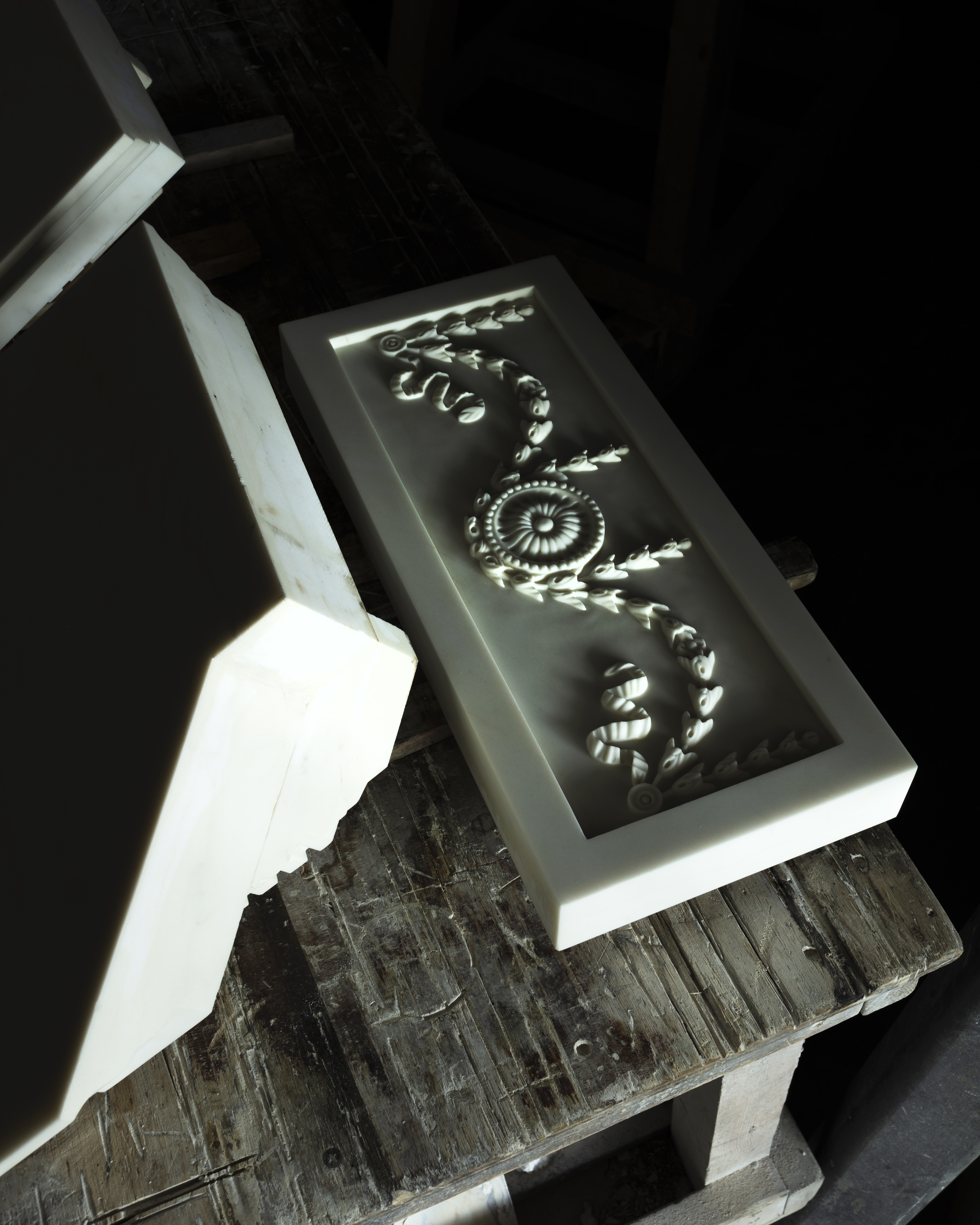
The Jamb Stone Workshop as seen in Ateliers of Europe’ - An Atlas of Decorative Arts Workshops’ by John Whelan and Oskar Proctor.
We were delighted to be chosen as 1 of 3 establishments in England, preserving traditional and handcrafted skills from our London Warehouse and Oskar beautifully captures this.
It is a wonderful book, which documents and celebrates the ‘Atelier’ - studios and artists who preserve traditional handcrafted skills.
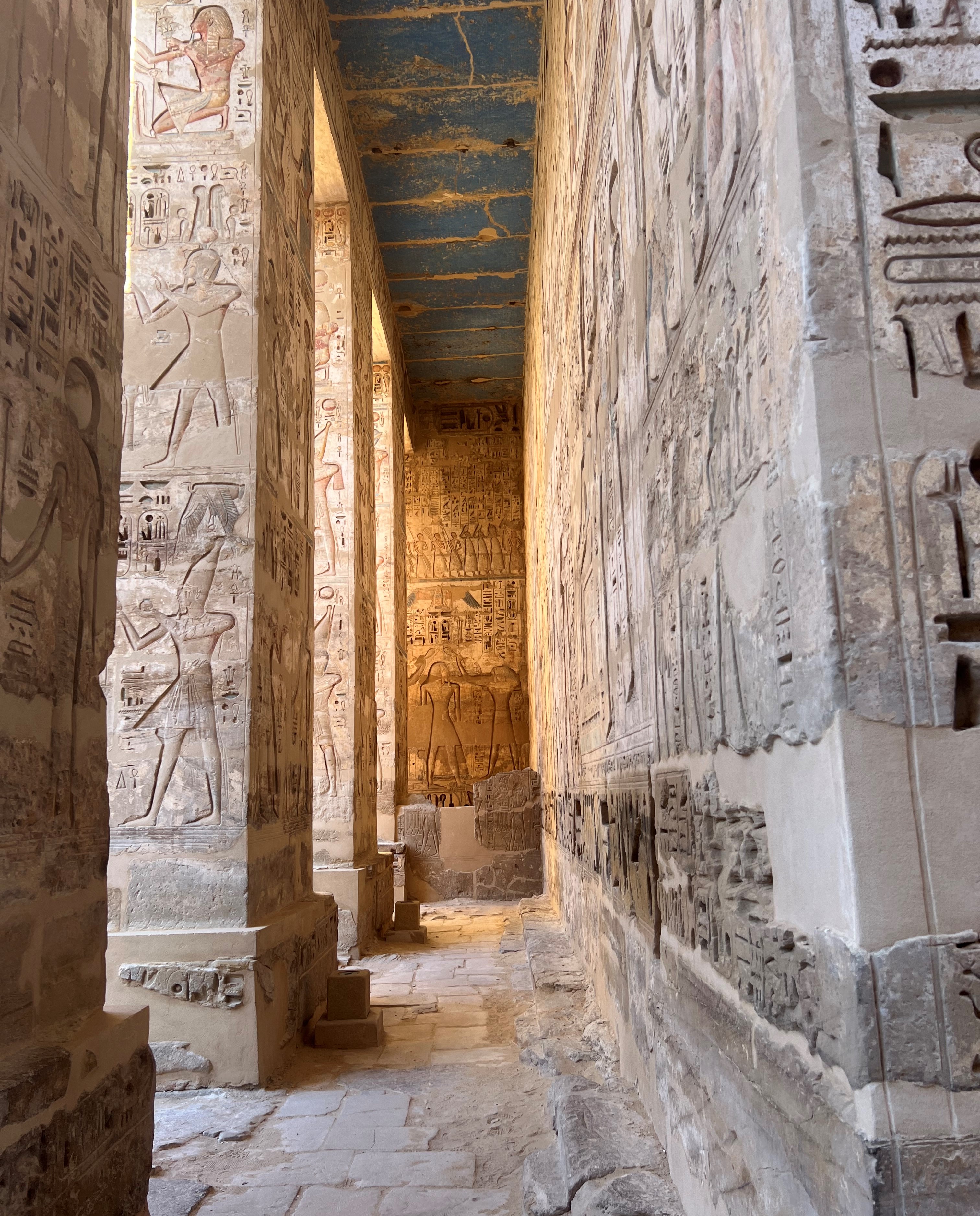
During half term, we took the children to Egypt.
During half term, we took the children to Egypt. Returning with Charlotte and the children, was a total joy, to learn and be immersed in this ancient world together. We came back with a renewed passion , refreshed and flowing with ideas inspired from one of the founding civilisations.
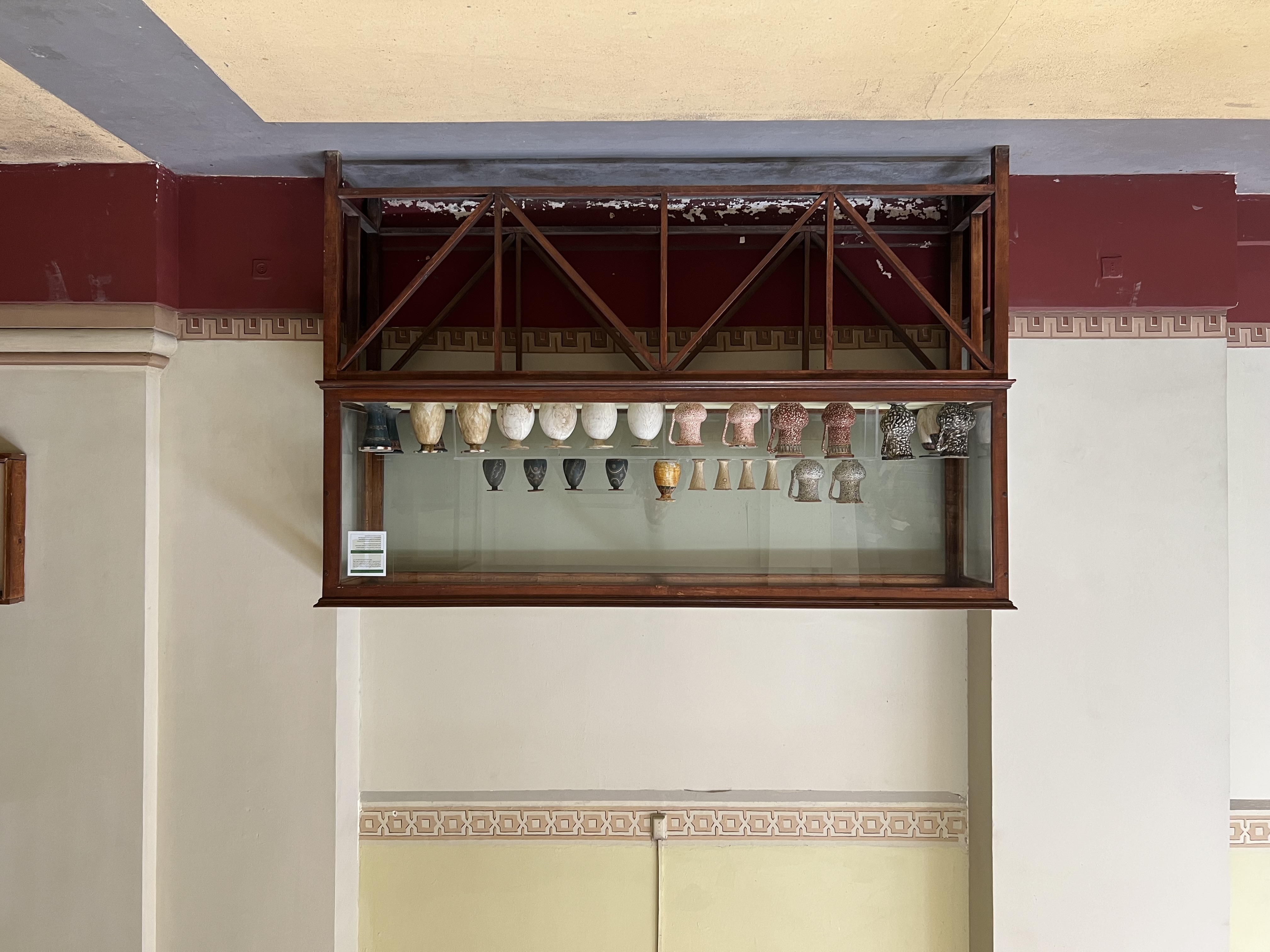
I first visited Egypt, 30 years ago, a passing of time that fills me with disbelief as I remember it so vividly.
I first visited Egypt, 30 years ago, a passing of time that fills me with disbelief as I remember it so vividly. I went under invitation of Steven Cox, a world renowned sculptor and aesthete , who had been granted access by the Egyptian government of the disused porphyry mine, quarried by the ancient Egyptians and then subsequently favoured as the Imperial material of the Roman Empire . Situated in the Eastern Desert and long since lost in the 20th Century , we were guided in the middle of the night by one of the few remaining Bedouin’s, Sheikh Abdul Zahirin . We found ourselves immersed in the stone of ‘mythical nature’- the most celebrated source of the purple imperial stone, reflecting one of the greatest civilisations of all time and so revered by the Emperors and rulers of Ancient Rome.
I went onto buy 20 tonnes of porphyry, half of which still remains on the desert floor and the other half sold through various deals. It also went onto inspire and be worked within some of our first reproductions of 18th Century chimneypiece collections using rare stones, popularised in England by the Grand Tour.
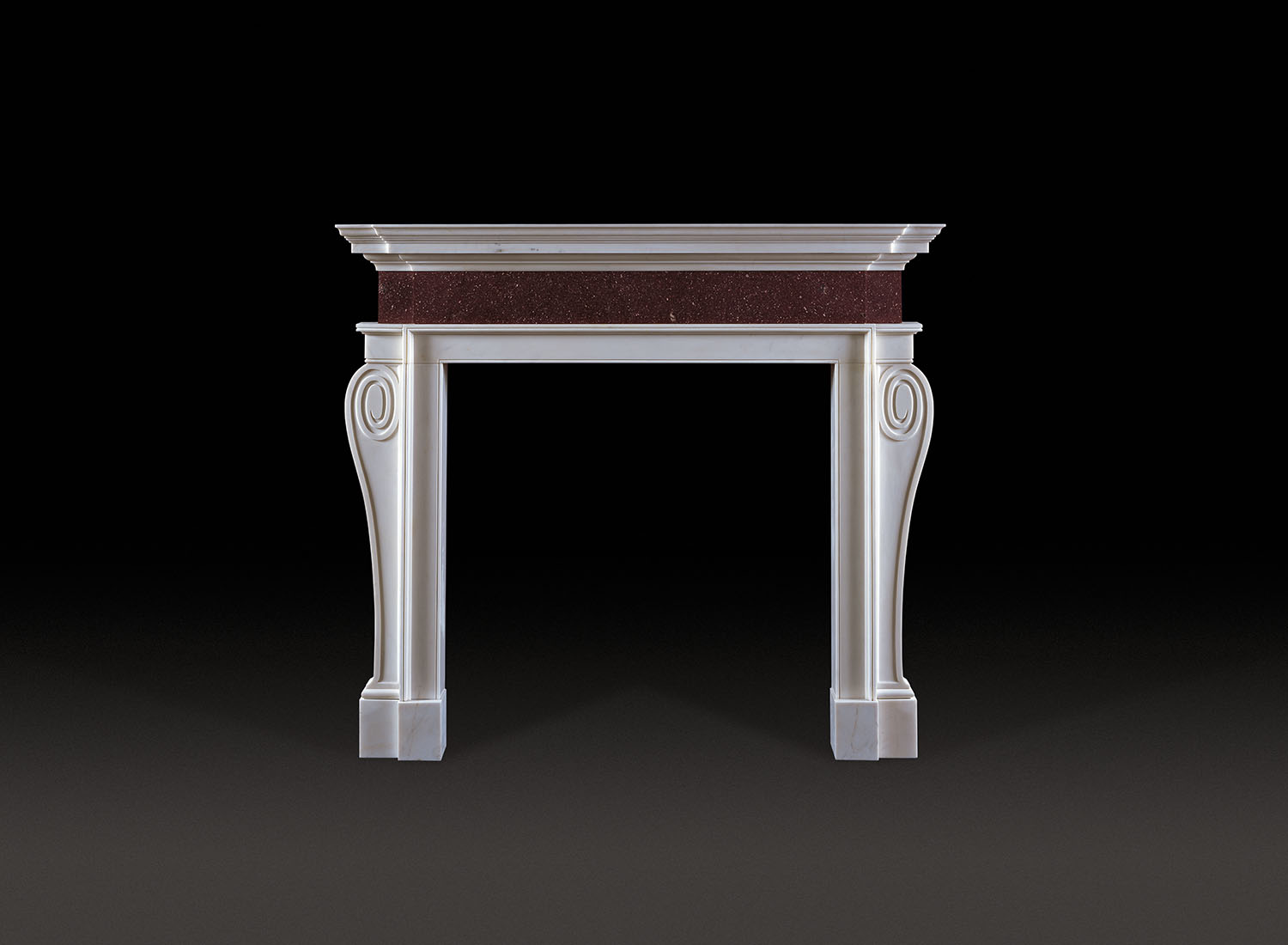
The Oxford Reproduction Mantel is hand carved from a combination of Ancient Porphyry and Statuary White Marble
It was in 1842, that Karl Lepsius, created a list of the pyramids. At that point 67 had been discovered. Since then the shifting sands of time, has revealed many more. Of course, one is visually aware of the iconic landmarks of Egypt, but there is truly nothing like seeing them first hand - the staggering scale and beauty of the Pyramids. What I found fascinating, is despite being on the planet for nearly 5000 years, they are much more a part of a modern vernacular than one could imagine. Undoubtedly, they have had a foundation in inspiring the other greatest civilisations, but they reflect modernism in so many more ways than subsequent cultures. For example, the use of columns without entasis out lined by a flat sloping incline is breathtakingly, simple, effective and modern.
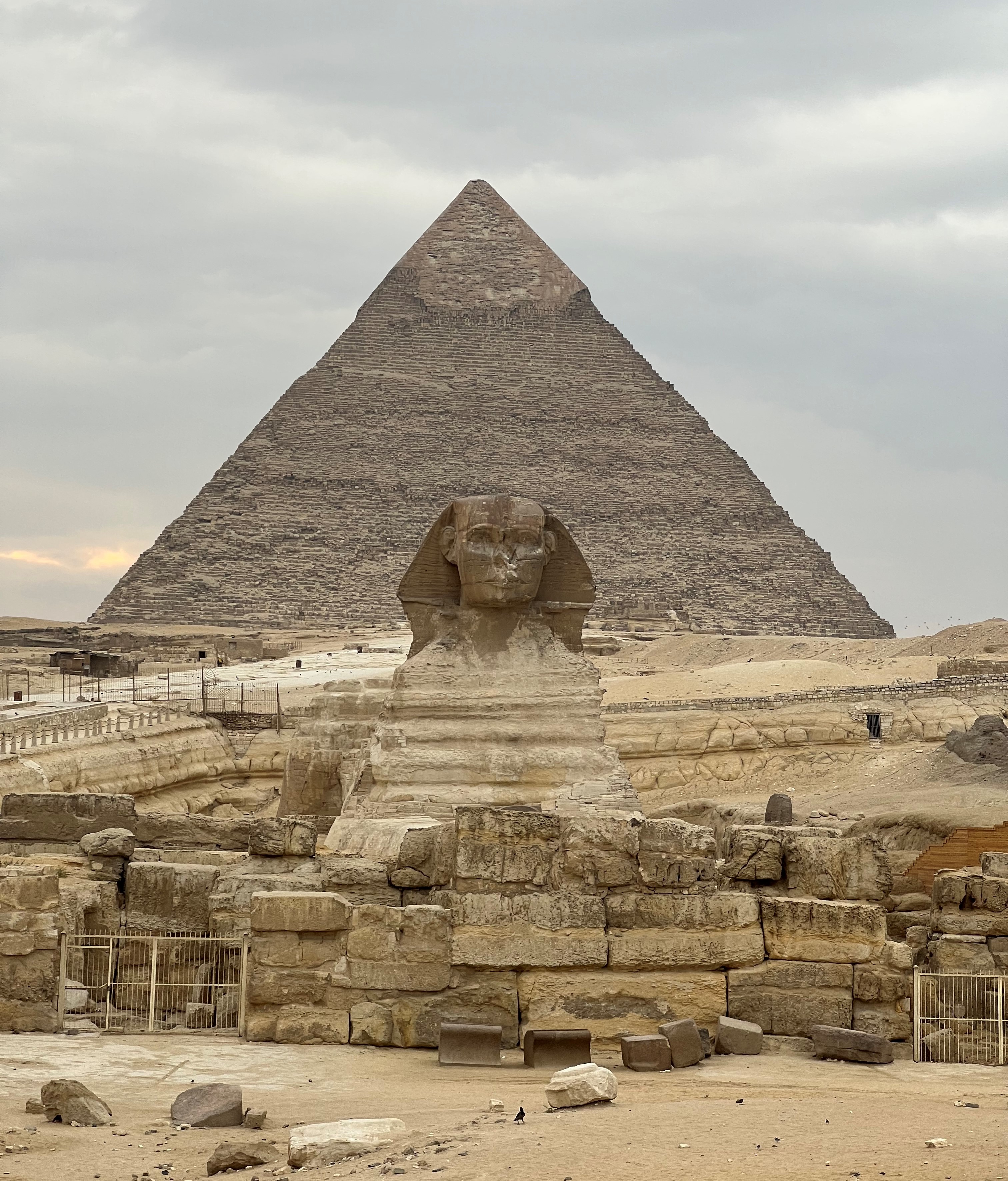
Despite being on the planet for nearly 5000 years, the Pyramids are much more a part of a modern vernacular than one could imagine.
Most pyramids were faced with polished, highly reflective white limestone, in order to give them a brilliant appearance when viewed from a distance.
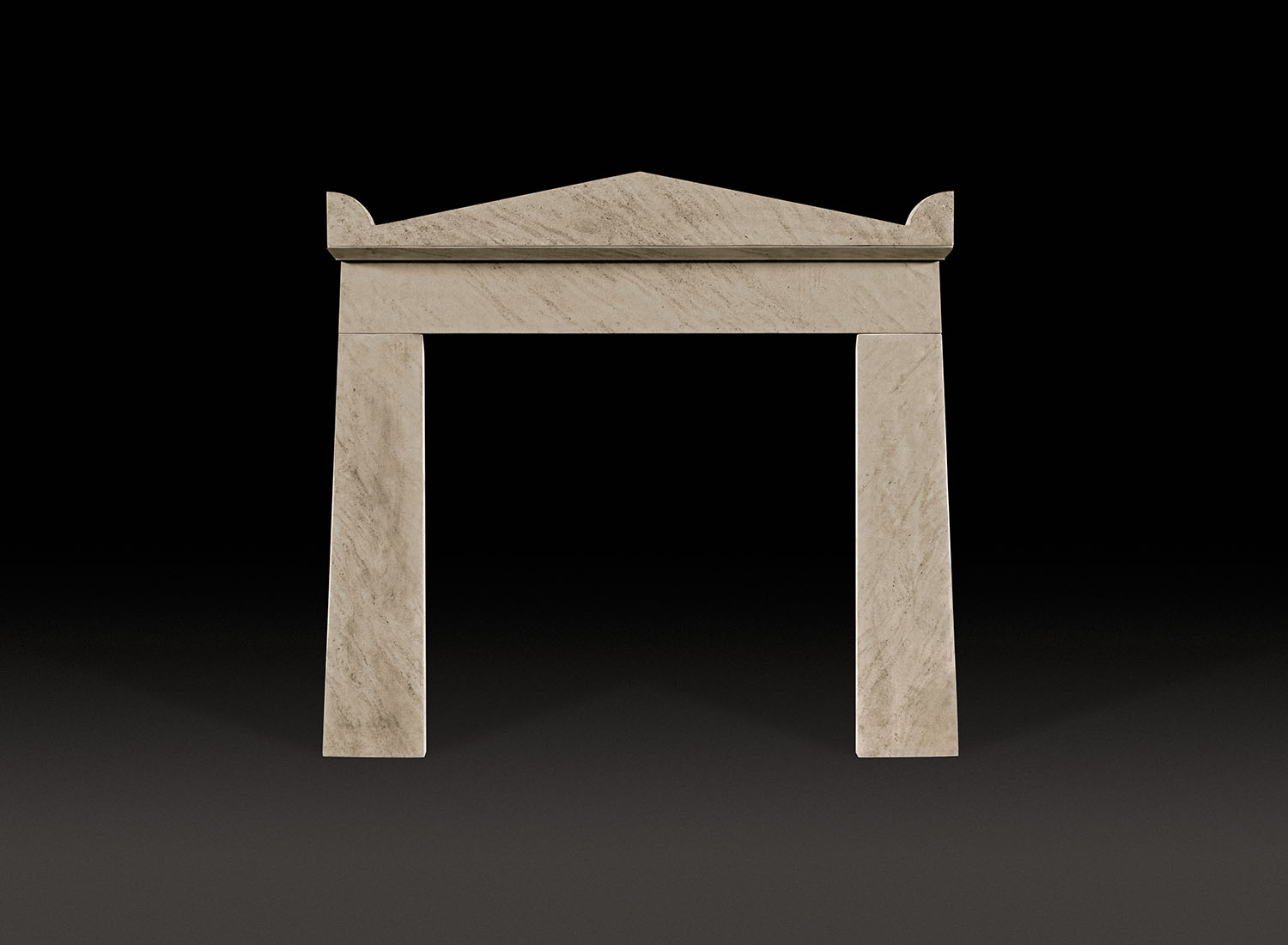
The Grenville: a dramatic limestone fireplace which displays many characteristics of the classic Egyptian revivalist style of the English Regency, synonymous with Thomas Hope (1769–1831)
Seldom subject to a flat wall, these deep sloping linear forms, inspired me deeply and will certainly lead to a collection developing around some of the features and designs we saw.
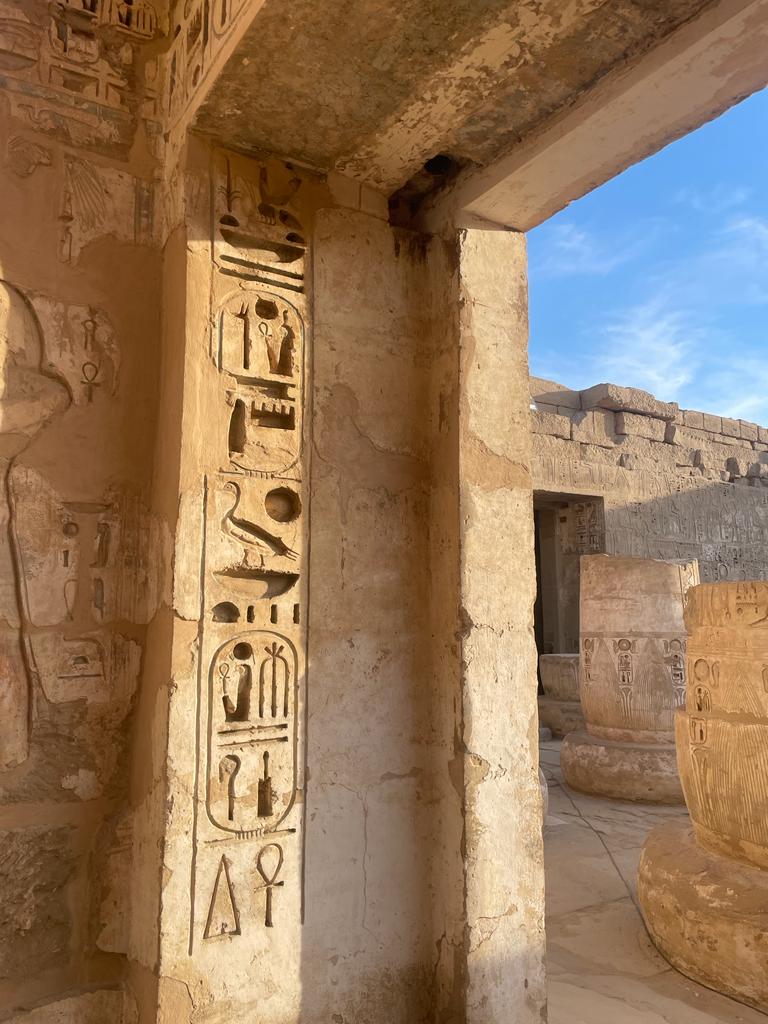
So much detail is on the surface, incised with different depths, the tales told in beautiful, engraved hieroglyphics.
We visited the Tomb of Tutankhamun, just a few months after the Centenary anniversary of Carter’s discovery. It was totally incredible to see the influence which spread into the world. On the side of one sarcophagus an incised decoration quite literally reminded me of the base floors of a sky scraper on the upper east side in New York.
We shared the joy of graffiti from the Coptic Christians and later remnants from the 18th century. I felt I had never been immersed in so much ancient art. So much detail is on the surface, incised with different depths, the tales told in beautiful, engraved hieroglyphics. The very beginnings of Western art as we know it, but also interesting to consider the fleeting moments in the universal limelight, the rise and fall and pure intermix of so many ancient civilisations.
Egyptomania was sparked initially in the Napoleonic era and then later during the Egyptian revival of the 1920’s. Such vibrant but fleeting moments for such a monumental and historically important culture.
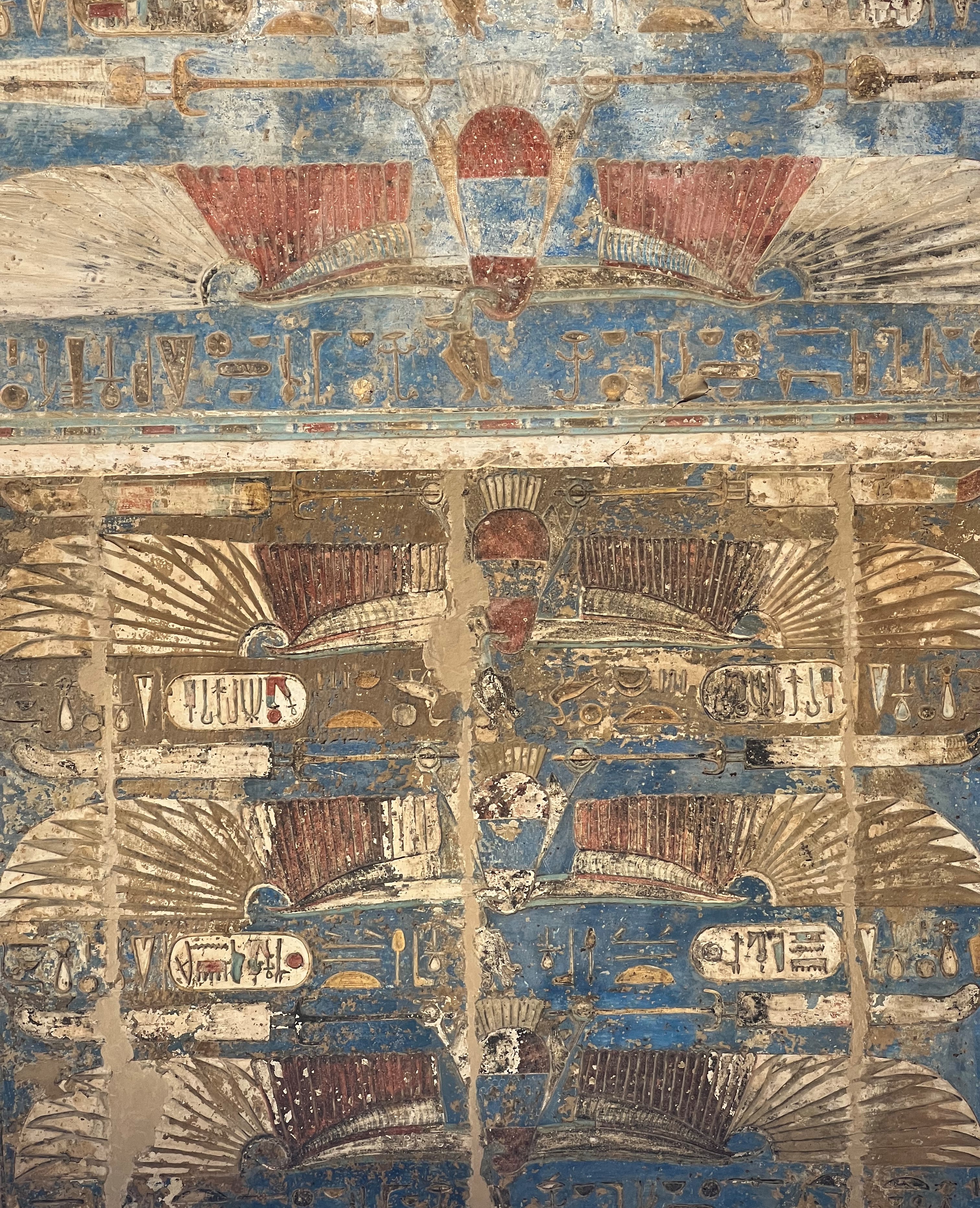
Such vibrant but fleeting moments for such a monumental and historically important culture.
I reflected upon the furniture I have had in our antique collection, including a fine Early 19th Century Mahogany Egyptian Revival Breakfront Bookcase, in the manner of George Smith, which I had sold 6 months ago. I went out of my mind with longing, lamenting this piece and reflecting on how unbelievably rare these revival pieces are. Something I am unlikely to ever handle again, which in a way brings us full circle to why we created Jamb, to reproduce the finest lighting, furniture and fireplaces inspired by antiques we have once owned, so once the original is gone, the design lives on.
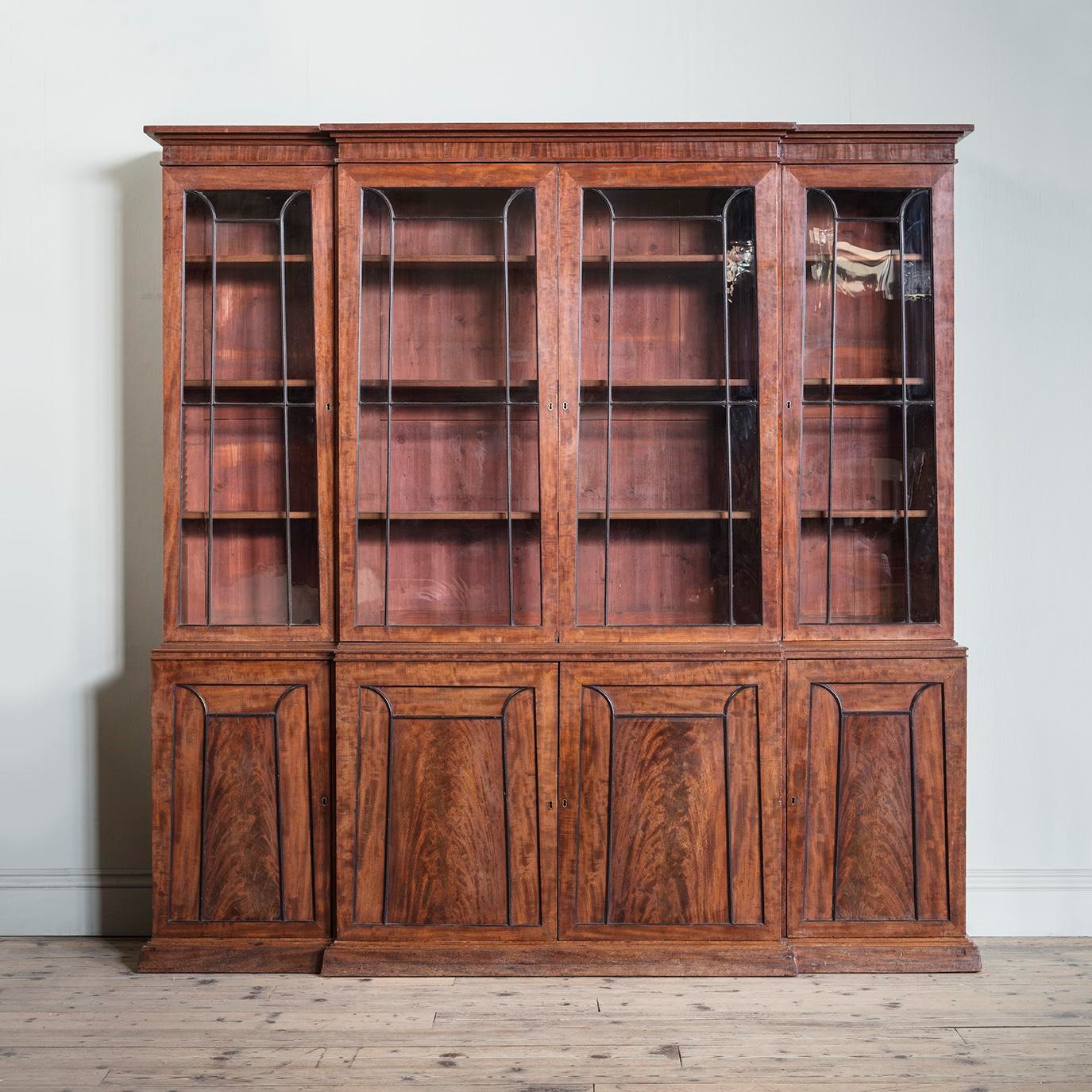
A fine Early 19th Century Mahogany Egyptian Revival Breakfront Bookcase, in the manner of George Smith.
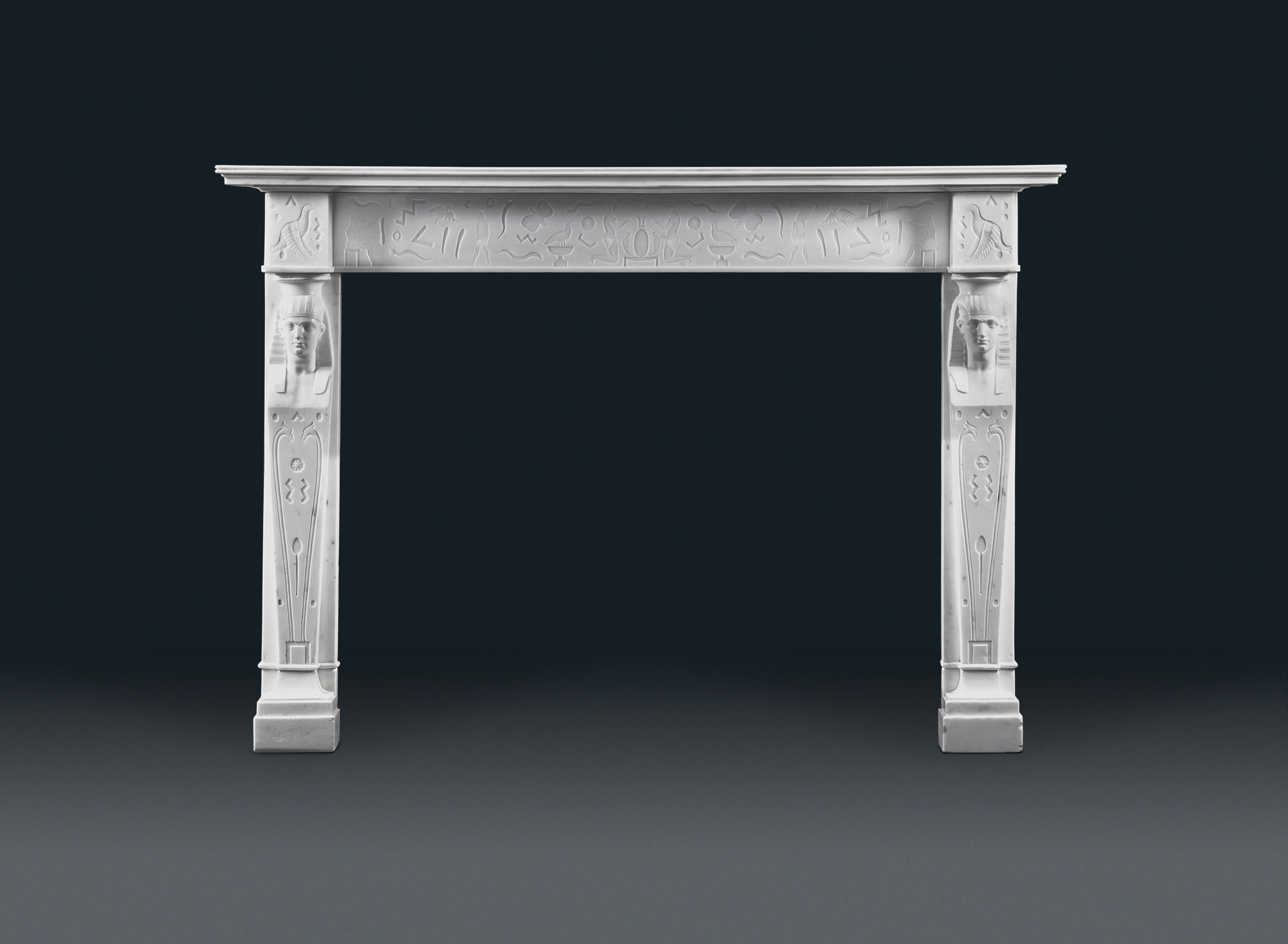
Antique Mantel N298: A magnificent, rare, English Regency, Neoclassical, Egyptian style, with running hieroglyphic carvings, supporting tapering caryatid jambs on footblocks.
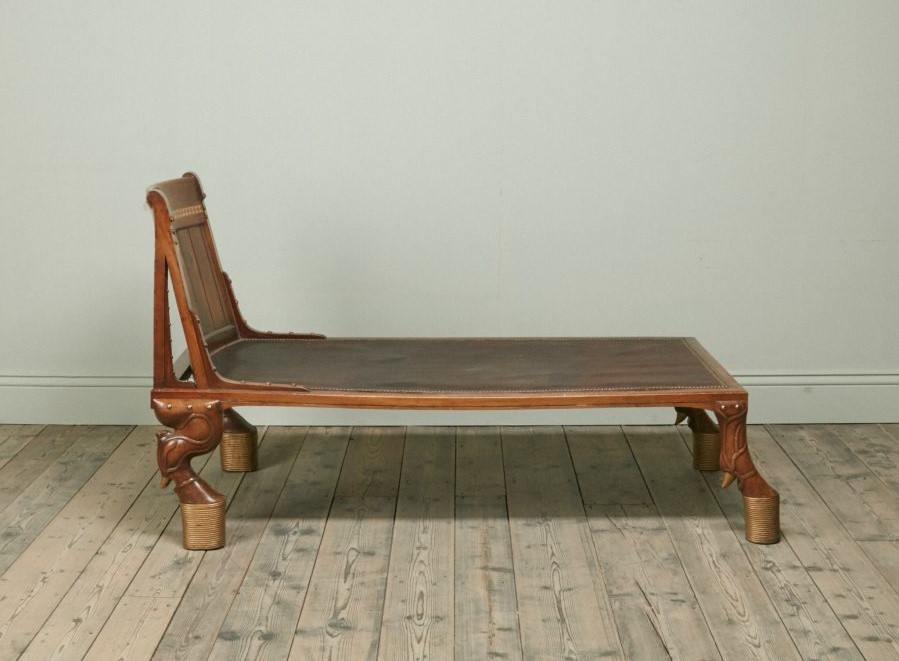
A Spectacular Nineteenth Century Walnut Egyptian Revival Day Bed With geometric inlay and accentuated stimulated rope bound hoof feet.
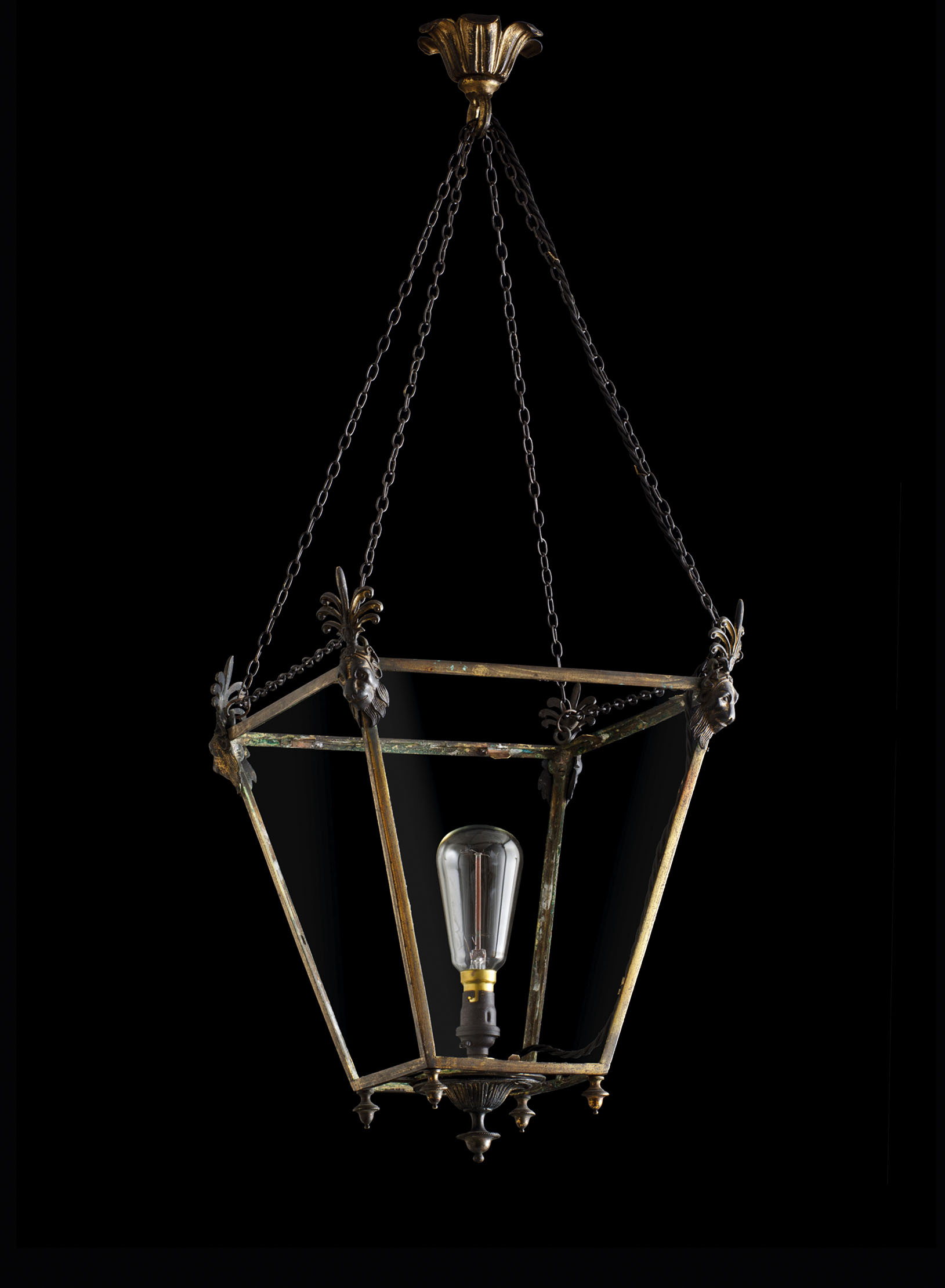
The Tatham Hanging Lantern is surmounted by female Egyptian lions masks capped with anthemion fronds.
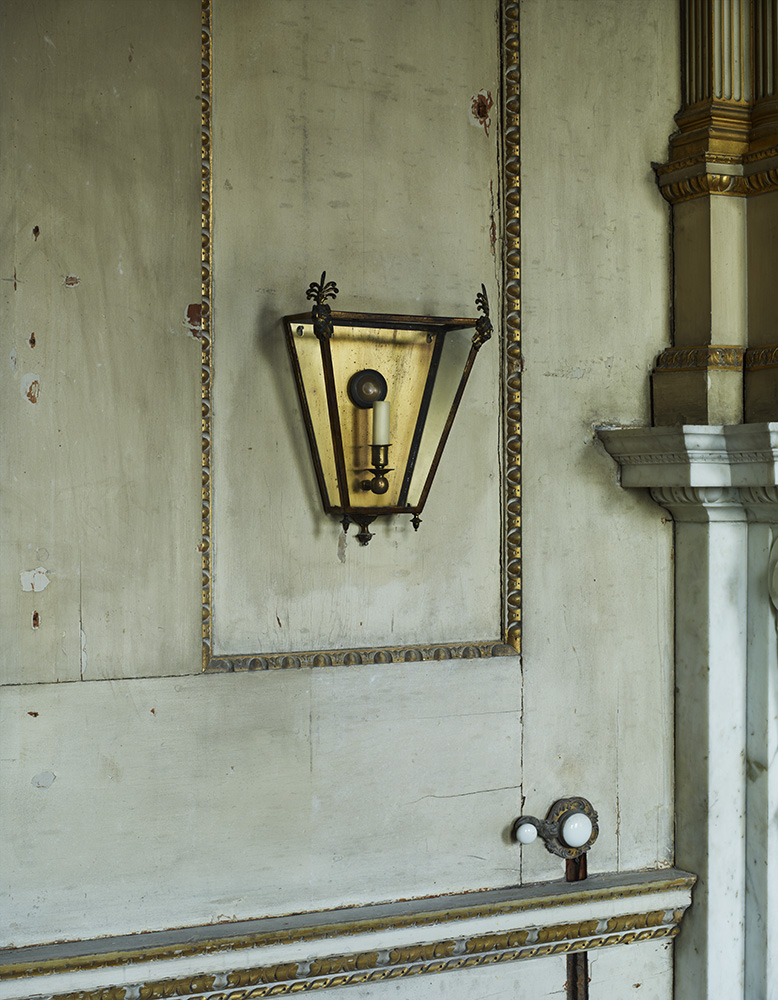
The Tatham Hanging Lantern is surmounted by female Egyptian lions masks capped with anthemion fronds.



